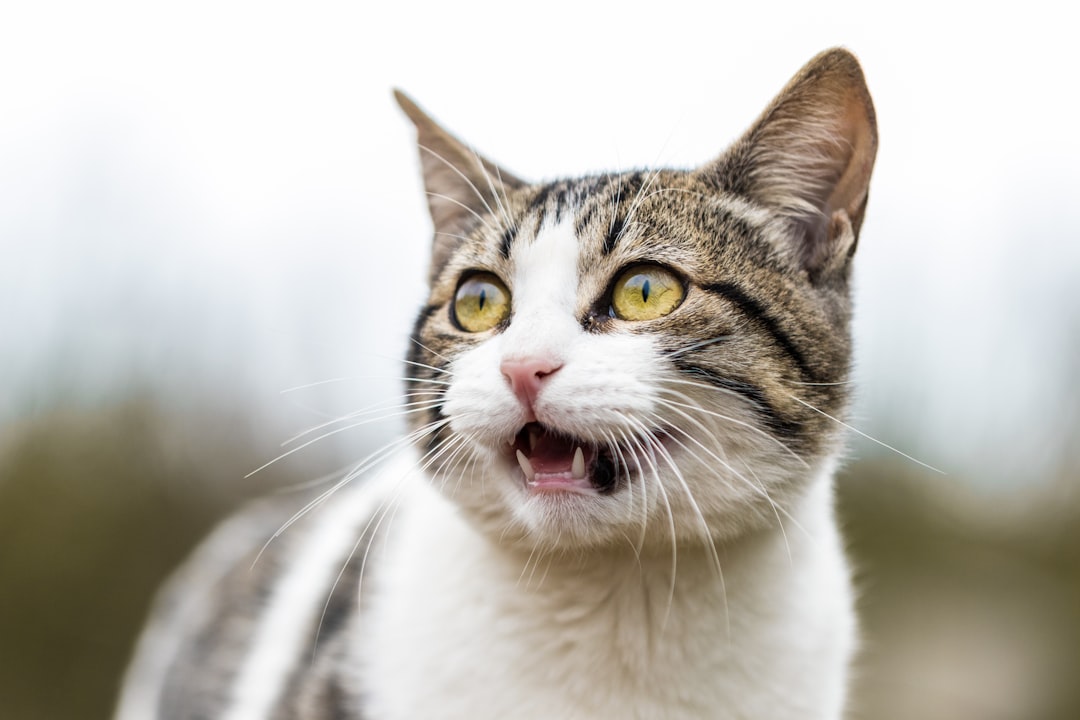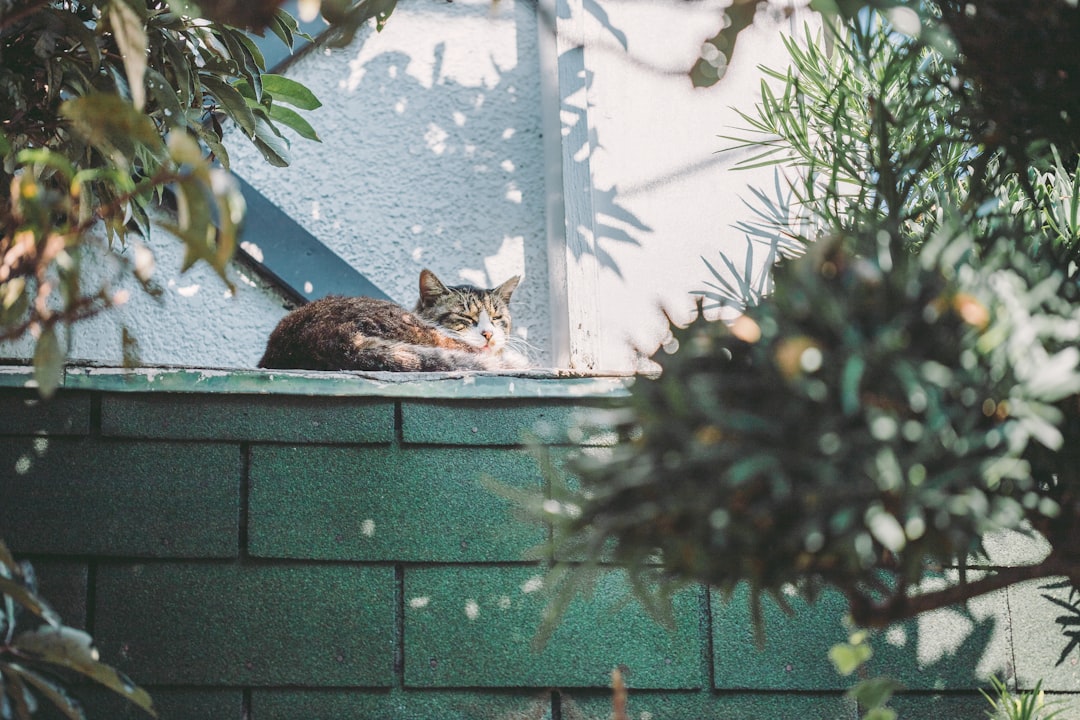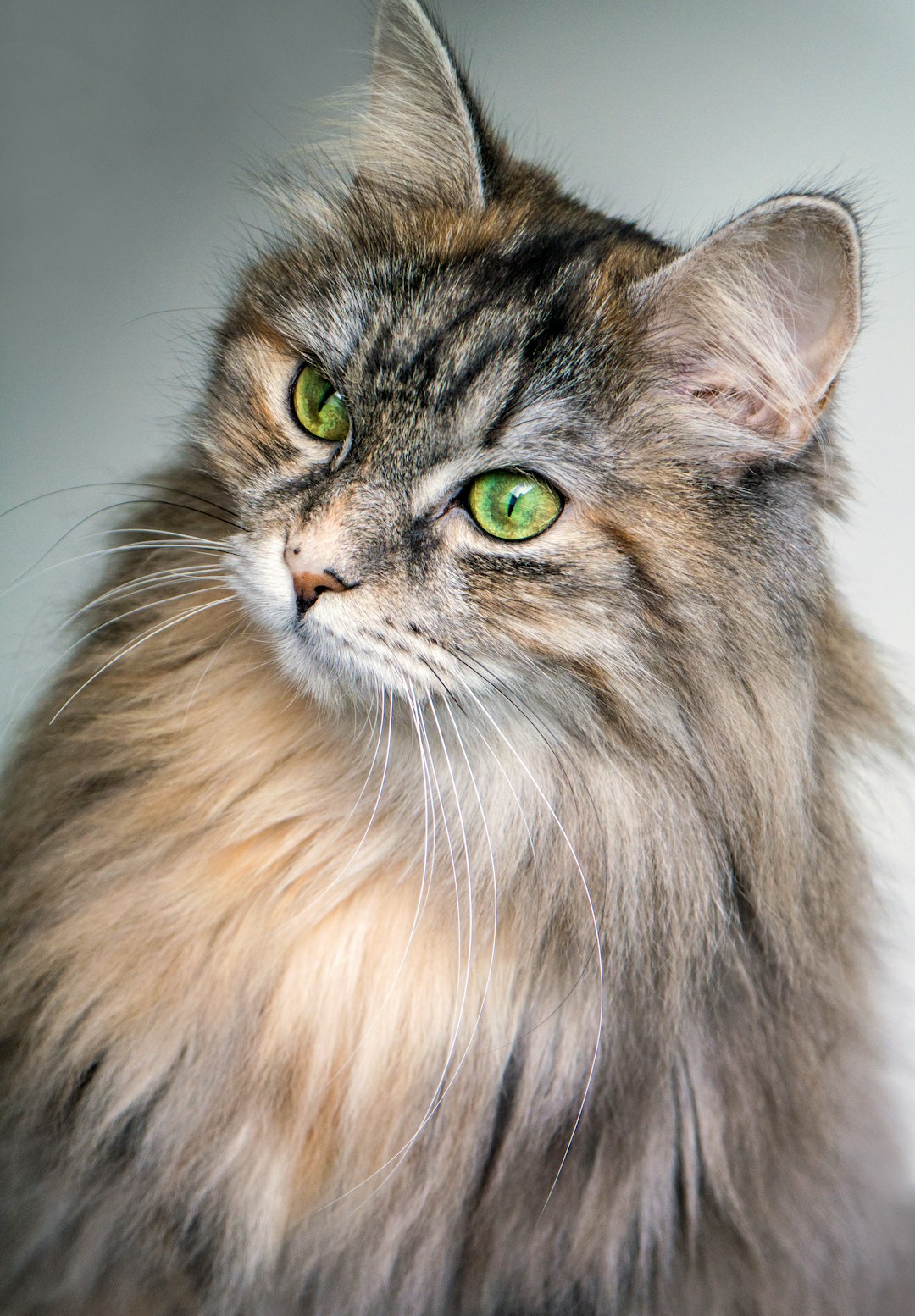Cats are known for their remarkable agility and grace, but one of the most intriguing aspects of their behavior revolves around stretching. If you’ve ever watched your feline friend extend its paws and arch its back in a luxurious display, you might wonder what this behavior signifies. In this blog post, we will explore the fascinating world of feline stretching habits, delving into its definitions, common forms, and the reasons behind these adorable antics. Additionally, we’ll discuss how to identify signs of a healthy stretch, the link between stretching and temperature variations—why are my cat’s ears hot?—and when stretching may indicate a potential concern. Furthermore, we will examine the impact of the environment and play on stretching behaviors, and, ultimately, how you can encourage healthy stretching in your beloved pet. By the end, you’ll have a comprehensive understanding of why stretching is essential for your cat’s well-being and how to listen to their unique needs.
Feline Stretching Defined
Felines are known for their graceful movements and flexible bodies, often displaying an impressive array of stretching habits. Stretching is a natural behavior for cats, essential for maintaining their overall health and well-being. This section will delve into what feline stretching entails, its importance, and how it relates to cat behavior.
Understanding Cat Anatomy
To appreciate feline stretching, it’s crucial to understand cat anatomy. Cats possess a unique skeletal structure characterized by:
| Feature | Description |
|---|---|
| Flexible Spine | Felines have a highly flexible spine, allowing for an elongated stretch. |
| Retractable Claws | This aids in maintaining balance and grip during stretching. |
| Long Limb Muscles | Powerful muscles work in harmony to facilitate stretching movements. |
These anatomical features not only enhance their agility but also help cats maintain muscle flexibility, which is vital for their hunting instincts.
Importance of Stretching for Cats
Stretching plays several key roles in feline health:
- Muscle Maintenance: Regular stretching helps keep their muscles long and healthy, preventing stiffness.
- Injury Prevention: Stretching before engaging in play or activities can help avoid injuries.
- Improved Circulation: It stimulates blood flow, enhancing overall bodily functions.
- Stress Relief: Just like humans, stretching can help cats relieve tension and stress.
In summary, stretching is more than just an adorable behavior—it’s a fundamental aspect of a cat’s daily routine that supports their health and lifestyle. Understanding these elements not only enhances your knowledge of feline behavior but also helps you provide your cat with a nurturing environment.
Common Cat Stretching Habits
The Cat Pose Explained
One of the most recognizable stretching habits of cats is the Cat Pose. When your feline friend performs this stretch, they typically extend their front legs while arching their back upwards. This movement serves several purposes:
- Flexibility: It enhances flexibility in the spine and improves overall agility.
- Muscle Stretch: Targeting the back and shoulder muscles helps maintain their strength.
- Awareness: After a long nap, conducting this stretch can help cats become more alert and aware of their surroundings.
Downward Dog Stretch in Cats
Another common stretching behavior is comparable to the Downward Dog pose seen in yoga. When a cat stretches its front legs forward while keeping its back legs straight and elevated, it resembles this position. The benefits of this stretch include:
| Benefits | Details |
|---|---|
| Improved Blood Circulation | Enhances overall circulation, promoting better health. |
| Spinal Flexibility | Helps maintain a supple spine, crucial for agility. |
| Mental Stimulation | Engages their senses after rest, encouraging exploration. |
Understanding these common stretching habits is vital for observing your cat’s health and well-being. However, if you ever find yourself questioning why are my cat’s ears hot?, it may not directly correlate with stretching, but rather indicate other health factors such as body temperature or stress levels.
Reasons Behind Cat Stretching
Physical Wellness
Stretching is an essential activity for cats, serving various purposes tied to their physical wellness. Like humans, cats need to maintain flexibility and muscle health. Here are some reasons behind cat stretching:
| Reason | Description |
|---|---|
| Muscle Relaxation | Stretching helps relax tight muscles, promoting overall well-being. |
| Joint Flexibility | Stretching increases the range of motion in joints, enhancing mobility. |
| Blood Circulation | Engaging in stretches promotes better blood flow, which can prevent stiffness. |
| Preparation for Activity | Before jumping or running, stretching warms up the muscles, decreasing injury risk. |
Behavioral Implications
Beyond physical health, stretching serves important behavioral functions. Cats use stretching to communicate and express themselves in various ways:
| Behavioral Aspect | Description |
|---|---|
| Stress Relief | Stretching can alleviate stress and anxiety, acting as a soothing mechanism. |
| Territory Marking | By stretching, cats may also release scent from their glands, marking their territory. |
| Social Signals | Stretching can be an invitation for play or interaction with other pets or humans. |
Understanding why are my cat’s ears hot? can also be linked to their stretching habits; increased body temperature from stretching—especially after a restful nap—might cause heat in their ears. Recognizing these reasons can foster a deeper appreciation for your feline friend’s stretching routines.
Signs of a Healthy Stretch
What to Look For
Recognizing the signs of a healthy stretch in your cat is essential for understanding their physical well-being. A content and healthy cat will exhibit various stretching habits that reflect a relaxed state. Here are key indicators:
| Sign | Description |
|---|---|
| Relaxed posture | Look for your cat to stretch with their limbs extended comfortably, not appearing tense or stiff. |
| Slow movements | A healthy stretch typically involves slow, deliberate motions rather than quick, jerky movements. |
| Purring | Accompanying sounds of contentment, such as purring, often signal that your cat is enjoying the stretch experience. |
| Tail position | A high and relaxed tail indicates comfort, while a low or tucked tail may suggest stress. |
Frequency of Stretching
The frequency of stretching is another essential aspect to monitor. Regular stretching can indicate a healthy lifestyle, while unusual patterns may warrant attention.
| Frequency | Interpretation |
|---|---|
| Multiple times a day | Normal for active and healthy cats, indicating flexibility and good muscle tone. |
| Rarely stretches | Could signify discomfort, lethargy, or potential health issues. |
| Excessive stretching | May suggest underlying pain or stress; it’s advisable to consult a vet. |
Understanding these signs not only enhances your knowledge of feline health but also strengthens the bond between you and your furry friend. Pay attention to their stretching habits, ensuring they are signs of relaxation and contentment.
Linking Heat to Stretching: Why are my cat’s ears hot?
Temperature Regulation in Cats
Cats have unique ways to regulate their body temperature, which may explain why their ears can feel warm to the touch. Typically, a cat’s normal body temperature ranges from 100.5°F to 102.5°F (38.1°C to 39.2°C). Ears are a part of this system, acting like an air conditioner. The ear’s blood vessels can dilate, allowing for heat to escape, particularly during moments of activity or stretching.
| Key Factors | Details |
|---|---|
| Normal Temperature | 100.5°F to 102.5°F (38.1°C to 39.2°C) |
| Cooling Mechanism | Dilating blood vessels in the ears allows heat dissipation |
| Sensitivity | Ears can feel hotter when the cat is active or stressed |
Stretching and Body Heat
Stretching is an essential behavior for cats, promoting flexibility and muscle health. However, during this activity, their body can heat up significantly. As your cat stretches, they activate their muscles, which generates additional body heat, contributing to warmer ears. Observing your cat after a good stretch can reveal a quick warmth in their ears but should return to a normal temperature fairly quickly.
This warmth can also be a sign of different emotional states. For instance, a cat that is excited or anxious may exhibit higher temperatures around its ears due to increased blood flow during stretching.
| Activity | Potential Effect |
|---|---|
| Stretching | Increases muscle activation and heat |
| Excitement | Enhances blood flow, leading to warmth |
| Calm relaxation | Restores normal temperature within minutes |
In summary, while increased warmth in your cat’s ears during stretching can be concerning, it’s often perfectly normal. Just be observant about any prolonged heat or additional symptoms that might indicate an underlying issue.
When Stretching Becomes a Concern
Identifying Abnormal Stretch Patterns
Understanding normal cat stretching habits is vital for identifying when something may be amiss. Typical stretching includes the classic “cat stretch” where they extend their front legs, arch their backs, and lower their heads. However, certain abnormal patterns may indicate underlying health issues. Look for the following signs which could suggest a problem:
| Sign | Possible Concern |
|---|---|
| Excessive stretching | Muscle or joint pain |
| Reluctance to stretch | Discomfort or injury |
| Stretching with frequent vocalization | Pain or distress |
| Stiffness when stretching | Arthritis or other musculoskeletal issues |
| Asymmetrical stretching | Injury or neurological issue |
If you observe any of these abnormal stretch patterns, you should pay attention to your cat’s overall behavior and health to determine the next steps.
Consulting a Veterinarian
If you notice abnormalities in your cat’s stretching routine, it’s crucial to seek professional help. A veterinarian can provide a thorough examination to rule out injuries or conditions such as arthritis, hip dysplasia, or even infections. During your visit, be prepared to discuss:
- Changes in appetite or energy levels
- Specific behaviors that accompany abnormal stretching
- Why are my cat’s ears hot? (Potential signs of fever or inflammation)
Prompt veterinary advice is essential for addressing these concerns early, ensuring your feline friend remains happy and healthy. Regular monitoring of your cat’s stretching habits not only fosters a better bond but also aids in maintaining their overall well-being.
Impact of Environment on Stretching
Ideal Stretching Spaces
The environment plays a crucial role in a cat’s stretching habits. An ideal stretching space should be safe, spacious, and comfortable. Cats thrive in areas where they feel secure and unbothered, which encourages them to stretch freely. Elements such as cozy surfaces, minimal clutter, and a variety of perches can create an inviting atmosphere for stretching. Below is a summary of key factors that contribute to an optimal stretching environment:
| Factor | Description |
|---|---|
| Safety | A secure area reduces anxiety and promotes confident stretching. |
| Space | Ample room allows for a variety of stretching postures. |
| Comfort | Soft surfaces, like carpet or blankets, enhance stretching enjoyment. |
| Temperature | A comfortable temperature supports overall well-being. |
Effects of Temperature on Cat Behavior
Temperature also significantly impacts feline behavior, including their stretching habits. Cats are sensitive to heat and cold, which can influence their motivation to stretch. When it’s too hot, cats may feel lethargic and opt for minimal movement, while cold temperatures can lead to tight muscles and reduced flexibility. Here’s how temperature affects stretching:
| Temperature | Potential Behavior |
|---|---|
| Too Hot | Cats may become sluggish and avoid lengthy stretches. |
| Too Cold | Cats might stay curled up, hindering their stretching ability. |
Understanding these environmental factors helps pet owners create an optimal space that encourages healthy stretching behavior while ensuring their feline friend remains comfortable and agile.
The Role of Play in Feline Stretching
Playtime as a Stretching Opportunity
Playtime is not just a fun activity for your cat; it serves an essential role in their physical well-being, particularly concerning stretching. Engaging in playful activities enables cats to utilize a range of motion across their limbs and spine, promoting flexibility and muscle health. During play, feline friends often assume various postures that closely resemble their natural stretching habits. Whether they are pouncing on a toy or leaping into the air, cats instinctively stretch their bodies, keeping their muscles supple and reducing the risk of injury.
| Play Activity | Stretching Benefits |
|---|---|
| Pouncing | Enhances back and leg flexibility |
| Climbing | Stretches shoulder and leg muscles |
| Scratching | Promotes spine and shoulder mobility |
Benefits of Active Play for Cats
Active playtime offers a myriad of benefits that contribute to both physical and mental well-being. Not only does it encourage natural stretching behaviors, but it also strengthens the bonds between you and your cat. Additionally, play can help alleviate stress and anxiety, which may otherwise lead to excessive stretching or even lethargy.
- Physical Health: Regular play helps maintain a healthy weight and muscle tone.
- Mental Stimulation: Engaging play keeps your cat mentally sharp and prevents boredom.
- Stress Relief: Active play reduces anxiety, promoting a more relaxed demeanor.
In essence, incorporating active play into your cat’s daily routine becomes vital for overall health and well-being, making it a fantastic opportunity for your furry friend to stretch and thrive.
How to Encourage Healthy Stretching
Creating a Stretch-Friendly Environment
To promote healthy stretching habits in your cat, it is essential to create a stretch-friendly environment. This means providing ample space for your feline friend to stretch out fully. Here are some key elements to consider:
| Element | Importance |
|---|---|
| Open Spaces | Allow freedom to stretch and move around. |
| Soft Surfaces | Use rugs or mats to encourage comfort when stretching. |
| Cat Trees | Offer vertical space for climbing and stretching comfortably. |
| Sunlit Areas | Cats often love to warm up in sunlight, enhancing their stretching routines. |
Providing these elements can greatly enhance your cat’s stretching routines while also fostering their natural instincts.
Incorporating Play and Exercise
Regular play and exercise is crucial for encouraging healthy stretching in cats. Engaging your feline with toys not only keeps them active but also promotes natural stretching behaviors. Here’s how to do it effectively:
| Activity | Benefits |
|---|---|
| Interactive Toys | Stimulate movement and stretching. |
| Chase Games | Encourage quick bursts of energy, followed by healthy stretches. |
| Puzzle Feeders | Combine eating with physical activity, prompting stretching before and after. |
Incorporating play into daily routines can be enjoyable for both you and your cat, promoting a healthier lifestyle overall. Engaging your cat in these activities will result in better flexibility and overall well-being, making it easier for them to perform the stretches they naturally enjoy.
Listening to Your Cat: Understanding Their Needs
Observing Body Language
Understanding your cat’s needs starts with keen observation of their body language. Cats communicate through various postures and movements, especially when they stretch. A cat stretching out completely with extended limbs and a raised tail signifies comfort and contentment.
| Body Language | Interpretation |
|---|---|
| Tail held high | Happy and confident |
| Slow stretching | Relaxed state, seeking attention |
| Sudden stretches | Sign of excitement or playfulness |
| Deep, prolonged stretches | Indication of needing to relieve tension |
By paying attention to these signals, you can gauge when your cat is relaxed or if they seek interaction. A cat that frequently stretches may also signal their desire for a little more engagement from their human companions.
Responding to Cat’s Stretch Signals
When you notice your feline friend stretching, it’s an excellent opportunity to engage with them. Responding positively can strengthen your bond. Here are some ways you can promote healthy interactions:
- Encouragement: Participate in playtime immediately after they stretch. Engage them with toys that encourage further movement.
- Gentle Petting: If your cat seems open to it, gently pet them after a stretch to support their relaxation.
- Creating Space: Ensure they have sufficient room to stretch comfortably.
By being attentive and following their cues, you help fulfill their needs for both physical and emotional well-being. This responsiveness not only reinforces trust but also enhances their overall quality of life. Understanding your cat means tuning into their stretching habits, as they convey a wealth of information about their emotional and physical states.
Frequently Asked Questions
What is the Cat Pose, and how does it benefit my cat’s health?
The Cat Pose, often seen in both yoga and feline behavior, involves arching the back while stretching the front paws forward and tucking the head. This stretch benefits a cat by promoting flexibility in the spine, improving balance, and enhancing muscle tone. It also helps maintain healthy joints and can alleviate tension in the back, making it an essential part of a cat’s daily routine for overall well-being.
How is Downward Dog different from the Cat Pose, and why do cats do it?
Downward Dog is a pose characterized by the front legs stretched out while the hindquarters are raised, creating an angled body shape. Cats engage in this stretch primarily to warm up their muscles after resting, to enhance their flexibility, and to prepare their bodies for movement. This stretching helps improve circulation and can prevent injuries, especially as cats age and become less mobile.
Are stretching habits in cats a sign of comfort or health issues?
Stretching is generally a sign of comfort and well-being in cats. They often stretch after waking up or when they feel relaxed. However, if a cat is stretching excessively or in a way that seems unusual, it could indicate discomfort or health issues like arthritis or muscular strain. It’s crucial for cat owners to monitor their pet’s behavior and consult a veterinarian if they notice any concerning changes in their stretching habits.
How can I encourage my cat to stretch regularly?
Encouraging your cat to stretch can be achieved by providing them with a safe and comfortable environment. Engage in interactive play using toys that stimulate movement, allowing your cat to naturally pick up stretches. Additionally, create vertical spaces like cat trees where they can climb and extend their bodies. Consistent playtime and providing scratching posts will also inspire stretching habits, fostering better physical health in your feline friend.
What are the signs that my cat is stretching properly and benefiting from it?
A cat that is stretching properly will display a relaxed demeanor, often alternating between the Cat Pose and Downward Dog. Signs of beneficial stretching include a smooth and fluid motion without signs of hesitation or discomfort. You may also notice your cat’s increased agility and improved posture. Consistent stretching leads to observable enhancements in their playfulness and energy levels, indicating that they are reaping the benefits of their stretching habits.



